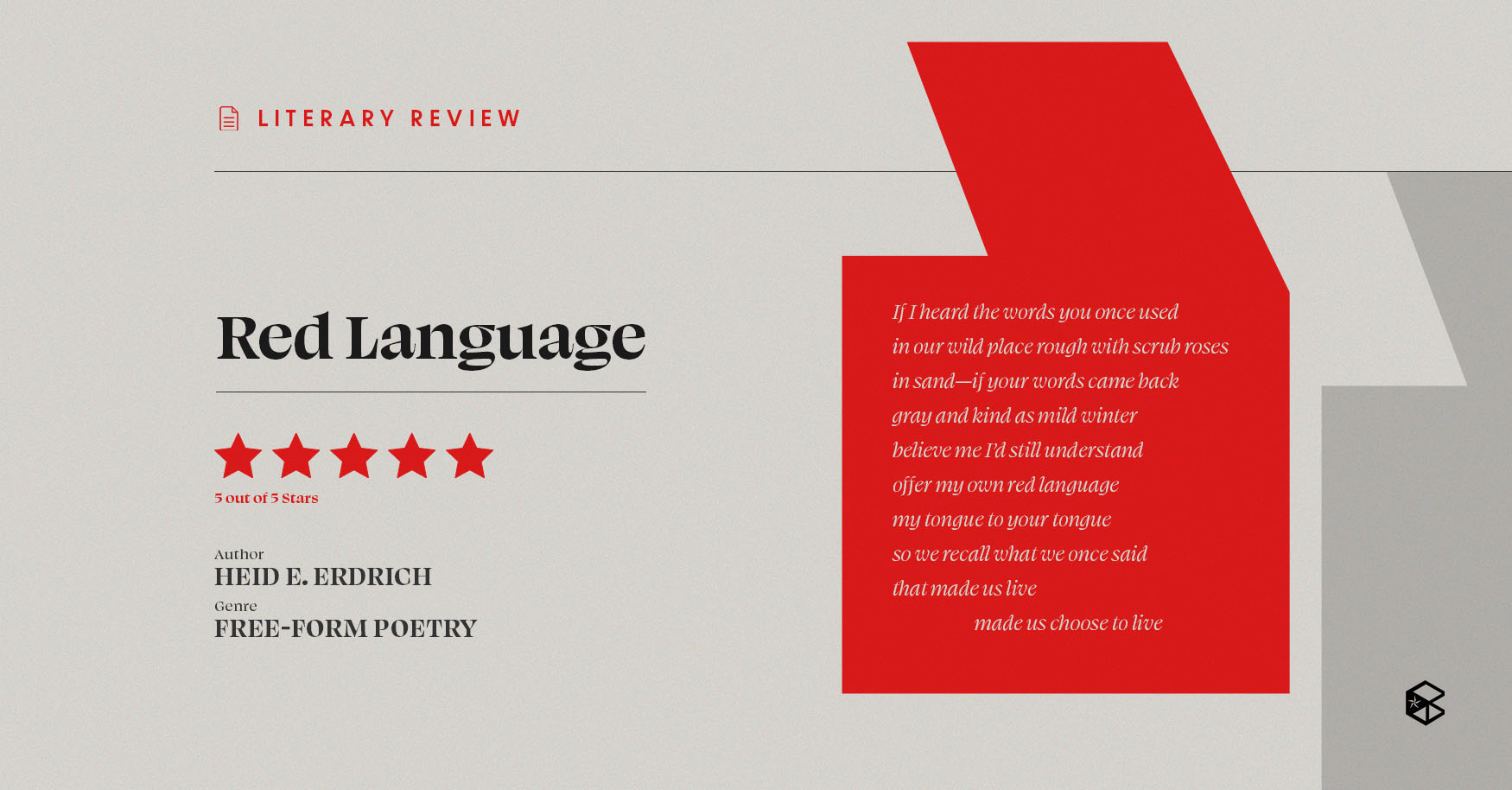With words depicting the multifacetedness of expression, Red Language is a free-form poem originally released in The Kenyon Review in 2020, and written by poet, all-rounder artist, and professor Heid E. Erdrich.
Color and language mutually reinforce each other. Language is colorful and can express a wide spectrum of emotions. Meanwhile, color has a variety of hues and shades donning different names. Heid E. Erdrich wrote succinct lines that stipple a prominent message into the hearts of readers—something that emboldens people to articulate what needs to be said aloud.
Looking between the lines, picking out the colors
If I heard the words you once used
In our wild place rough with scrub
Roses
In sand—
There is an undertone here of unresolved sorrow for both speaker and recipient. This is characterized by their “wild place” made to be “rough with roses.” Roses, in particular, are thorny flowers, and do not grow well in sandy soil. This stanza paints a shabby, unhealthy environment that negatively affects the two subjects’ well-being.
If your words came back
Gray and kind as mild winter
Believe me I’d still understand
The speaker speaks with exhaustion wrought from a recurring event, leading to desensitization, tolerance, and apathy. This can be seen in how something as unbearable as winter is described as kind and mild. Gray also commonly symbolizes uncertainty and gloom. It seems that the speaker has adapted to the piercing cold long before.
Offer my own red language
My tongue to your tongue
So we recall what we once said
That made us live
Made us choose to live
Red is the mother color of power and intensity, thus it nurses the feeling of hunger as well. Looking at the first two lines, the speaker has the desire to break the toxicity that comes with self-pity and helplessness. The hidden desperation underneath this desire is burning hotter little by little. Beyond the hurt, they see themselves healing—they need to heal—so they can “recall [...] what made them choose to live.”
While it is a miniature detail, it is fascinating how “made” is under “live,” as if emphasizing that creation is the foundation of life, and that life is what we make it. It is also interesting that in the earlier stanzas, the writer mostly used “you” and “me” pronouns before changing it to “we” and “us” as the poem ends. This can be coined as “helping someone help themselves.”
Red Language illustrates how a person can hurt others when they do not have an ounce of self-acceptance. The speaker ultimately has the goal of healing themselves and reinforcing boundaries through acts and words, which encompass language. Furthermore, the poem depicts the process of how red ought to be savored and how a language must be spoken, similar to how there is a multitude of colors bridging gray and shades of red in a color wheel. Simply put, the speaker wants to stand on their ground firmly as they say that things have changed for the better.
Language will always serve as a reminder that we belong somewhere; the existence of a mother tongue roots us in some place. Red, too, comes in various degrees, shapes, and forms—it is omnipresent. The manner of striving to remain relevant is a reminder of how we must preserve ourselves too. It is an act of revolution to safeguard ourselves in a world that begs us to give up.
You can read this poem for free on poets.org. The Kenyon Review also ships copies internationally for interested readers.


